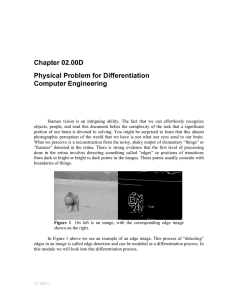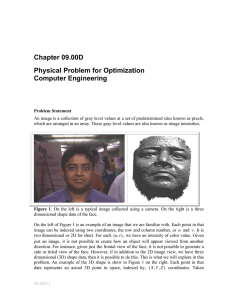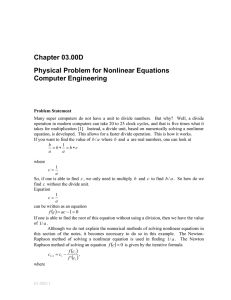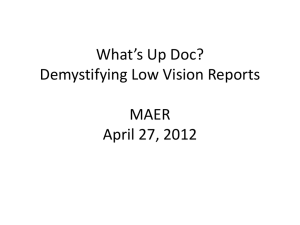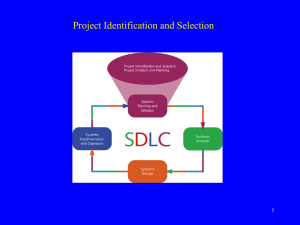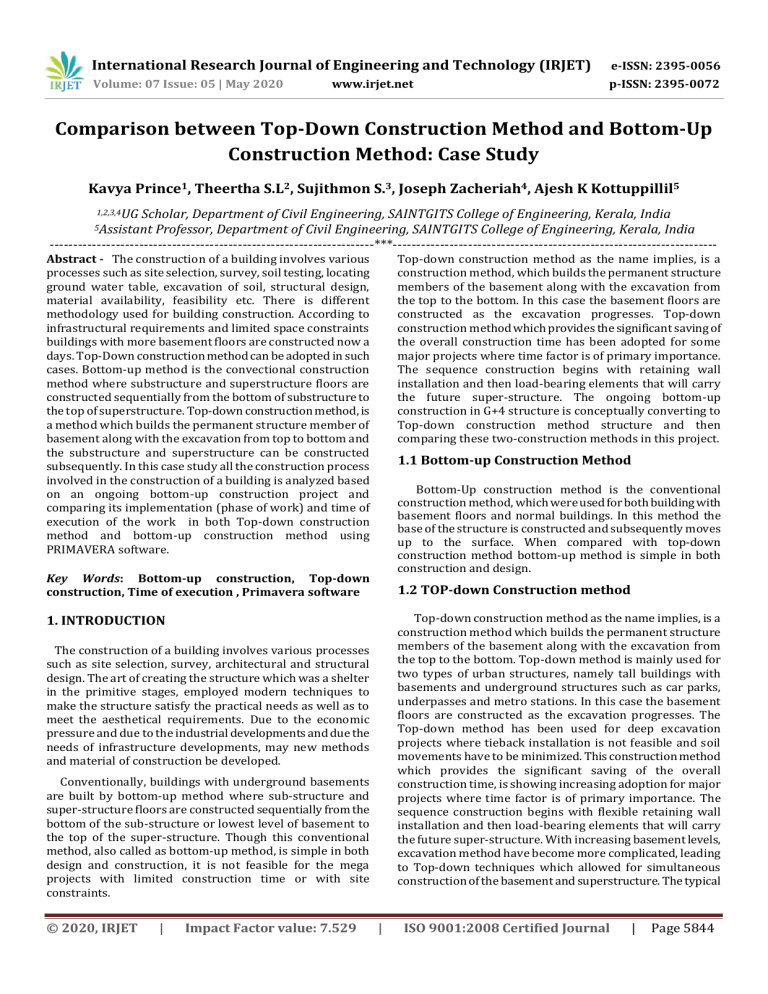
International Research Journal of Engineering and Technology (IRJET) e-ISSN: 2395-0056 Volume: 07 Issue: 05 | May 2020 p-ISSN: 2395-0072 www.irjet.net Comparison between Top-Down Construction Method and Bottom-Up Construction Method: Case Study Kavya Prince1, Theertha S.L2, Sujithmon S.3, Joseph Zacheriah4, Ajesh K Kottuppillil5 1,2,3,4UG Scholar, Department of Civil Engineering, SAINTGITS College of Engineering, Kerala, India Professor, Department of Civil Engineering, SAINTGITS College of Engineering, Kerala, India ---------------------------------------------------------------------***--------------------------------------------------------------------5Assistant Abstract - The construction of a building involves various processes such as site selection, survey, soil testing, locating ground water table, excavation of soil, structural design, material availability, feasibility etc. There is different methodology used for building construction. According to infrastructural requirements and limited space constraints buildings with more basement floors are constructed now a days. Top-Down construction method can be adopted in such cases. Bottom-up method is the convectional construction method where substructure and superstructure floors are constructed sequentially from the bottom of substructure to the top of superstructure. Top-down construction method, is a method which builds the permanent structure member of basement along with the excavation from top to bottom and the substructure and superstructure can be constructed subsequently. In this case study all the construction process involved in the construction of a building is analyzed based on an ongoing bottom-up construction project and comparing its implementation (phase of work) and time of execution of the work in both Top-down construction method and bottom-up construction method using PRIMAVERA software. Top-down construction method as the name implies, is a construction method, which builds the permanent structure members of the basement along with the excavation from the top to the bottom. In this case the basement floors are constructed as the excavation progresses. Top-down construction method which provides the significant saving of the overall construction time has been adopted for some major projects where time factor is of primary importance. The sequence construction begins with retaining wall installation and then load-bearing elements that will carry the future super-structure. The ongoing bottom-up construction in G+4 structure is conceptually converting to Top-down construction method structure and then comparing these two-construction methods in this project. 1.1 Bottom-up Construction Method Bottom-Up construction method is the conventional construction method, which were used for both building with basement floors and normal buildings. In this method the base of the structure is constructed and subsequently moves up to the surface. When compared with top-down construction method bottom-up method is simple in both construction and design. Key Words: Bottom-up construction, Top-down construction, Time of execution , Primavera software 1.2 TOP-down Construction method Top-down construction method as the name implies, is a construction method which builds the permanent structure members of the basement along with the excavation from the top to the bottom. Top-down method is mainly used for two types of urban structures, namely tall buildings with basements and underground structures such as car parks, underpasses and metro stations. In this case the basement floors are constructed as the excavation progresses. The Top-down method has been used for deep excavation projects where tieback installation is not feasible and soil movements have to be minimized. This construction method which provides the significant saving of the overall construction time, is showing increasing adoption for major projects where time factor is of primary importance. The sequence construction begins with flexible retaining wall installation and then load-bearing elements that will carry the future super-structure. With increasing basement levels, excavation method have become more complicated, leading to Top-down techniques which allowed for simultaneous construction of the basement and superstructure. The typical 1. INTRODUCTION The construction of a building involves various processes such as site selection, survey, architectural and structural design. The art of creating the structure which was a shelter in the primitive stages, employed modern techniques to make the structure satisfy the practical needs as well as to meet the aesthetical requirements. Due to the economic pressure and due to the industrial developments and due the needs of infrastructure developments, may new methods and material of construction be developed. Conventionally, buildings with underground basements are built by bottom-up method where sub-structure and super-structure floors are constructed sequentially from the bottom of the sub-structure or lowest level of basement to the top of the super-structure. Though this conventional method, also called as bottom-up method, is simple in both design and construction, it is not feasible for the mega projects with limited construction time or with site constraints. © 2020, IRJET | Impact Factor value: 7.529 | ISO 9001:2008 Certified Journal | Page 5844 International Research Journal of Engineering and Technology (IRJET) e-ISSN: 2395-0056 Volume: 07 Issue: 05 | May 2020 p-ISSN: 2395-0072 www.irjet.net construction sequence of top-down construction is as follows: Construct the embedded retaining wall (usually a diaphragm wall). Construct piles. Place the steel columns where the piles are constructed. Proceed to the first stage of excavation. Cast the floor slab of first basement level with the opening to allow machines to be lowered to excavate level below and for excavation material to be removed. Proceed to the second stage of excavation; cast the floor slab of the second basement level. Repeat the same procedure until the desired depth is reached. Construct the foundation slab. Complete the basement. Keep constructing the superstructure until it gets finished. Design and construction principles for the top-down method primarily call for two major structural elements. Columns with sufficient capacity must be pre-founded in bored piles or diaphragm wall panels to sustain the construction load and to utilize as part of the bracing system. 2. Case Study An ongoing bottom-up construction of a G+4 residential apartment at Trivandrum, Kerala is taken for comparison study. It is a rectangular plot surrounded with buildings, the main constraints of the site are limited space for parking and others activities and water table level. Considering these constraints the ongoing construction is theoretically converting into top-down construction method and comparing the activities and time of construction. Fig 1. G+4 residential Building In our project the above ongoing bottom-up construction of the residential building is theoretically converting into topdown construction procedure as follows: • The slabs have access voids at suitable distances through which the excavation is continued downwards for the second level of excavation or the first basement floor level. • Along with these simultaneously the floors above the ground level is constructed after the construction of first level of basement floor with roof slab. • After achieving the depth of one level of basement, the steel stanchion columns are reinforced by reinforcing bars and are made as permanent columns for the basement floor and similarly the diaphragm walls are also reinforced with increased thickness to become permanent part of the structure • This sequential process continuous until the two levels below the ground is cast and made, followed by the construction of three floors above ground level; hence in the end the intermediate piles cast into ground act as a permanent load carrying pillars. • The building is considered to have ground level and three levels subsequently above it; with two levels of underground level/basement level with the first initial basement level To be residential apartments while the second basement level below it to have parking facilities. • Gravity walls/retaining walls have to be installed into ground first. Then intermediate piles are driven into the ground as per requirement. Then the soil is excavated upto a limited height. • After that the ground floor slab is cast first acting as a both ground floor slab and roof slab for the basement floor. The ground slab is done along with installing support mechanisms (anchors) to the basement from retaining walls. 3. Scheduling the Activities The construction activities from ancient age have a typical stage of commencement during the execution phase i.e. the first activity starts from the foundation of the structure. The conventional method of construction of structures is based on BottomUp method in which the sub-structure and super-structure floors are constructed sequentially from the bottom of the substructure or lowest level of basement to the top of the super-structure. This method is suitable for small scale works, as there is rapid change in patterns of use of land available like use of underground basements for parking, underground metro stations the volume of works at the foundation level of the structures has increased to manifolds The top-down method is an another construction method that can be used for structures with basement floor and having space and other constraints. © 2020, IRJET | Impact Factor value: 7.529 | ISO 9001:2008 Certified Journal | Page 5845 International Research Journal of Engineering and Technology (IRJET) e-ISSN: 2395-0056 Volume: 07 Issue: 05 | May 2020 p-ISSN: 2395-0072 www.irjet.net Here the all the activities in a construction project management such as project duration, resources, labor etc., are scheduling using primavera in both the above construction methods with respect to our project site (residential building (G+4)). Bottom-up Construction Schedule Using primavera all the activities such as project duration, resources, labor, cost etc. for the proposed residential apartment with G+4 in bottom-up construction is scheduled. The residential building project is situated in Trivandrum, Kerala. The residential building is 926.112square feet with G+4 structure without providing required parking facilities. Construction schedule is as shown in the Table. APPARTMENT BUILDING G+4_td # Activity ID Activity Name 1 APPARTMENT BUILDING G+4_td 2 Diaphram Wall Construction 3 4 5 Original Start Duration A1000 Earthwork excavation A1010 Reinforced Cement concrete - R.C.C (with reinforceme Pile foundation BudgetedTotal Cost Finish 300.75d 01-Jun-19 A 20-May-20 133,034,941.16 24.00d 01-Jun-19 A 01-Jul-19 A 962,500.00 4.00d 01-Jun-19 A 06-Jun-19 A 27,500.00 20.00d 07-Jun-19 A 01-Jul-19 A 935,000.00 44.00d 01-Jul-19 A 22-Aug-19 A 5,220,000.00 6 A1020 Drilling of holes at 20m depth for pile foundation 24.00d 01-Jul-19 A 29-Jul-19 A 2,160,000.00 7 A1030 Reinforced Cement concrete - R.C.C (with reinforceme 20.00d 29-Jul-19 A 22-Aug-19 A 3,060,000.00 18.00d 22-Aug-19 12-Sep-19 A 1,035,000.00 8.00d 22-Aug-19 31-Aug-19 A 459,000.00 8.00d 22-Aug-19 31-Aug-19 A 459,000.00 8.00d 31-Aug-19 10-Sep-19 A 408,000.00 8.00d 31-Aug-19 10-Sep-19 A 408,000.00 2.00d 10-Sep-19 12-Sep-19 A 168,000.00 2.00d 10-Sep-19 12-Sep-19 A 168,000.00 22.00d 12-Sep-19 08-Oct-19 A 1,189,499.70 8.00d 12-Sep-19 21-Sep-19 A 459,000.00 8.00d 12-Sep-19 21-Sep-19 A 459,000.00 8.00d 21-Sep-19 01-Oct-19 A 408,000.00 8.00d 21-Sep-19 01-Oct-19 A 408,000.00 6.00d 01-Oct-19 A 08-Oct-19 A 322,499.70 8 BASEMENT FLOOR 9 TIE BEAM 10 A1040 11 COLUMNS 12 Reinforced Cement concrete - R.C.C (with reinforceme A1050 13 Plain Cement concrete 14 15 Reinforced Cement concrete - R.C.C (with reinforceme PCC A1060 GROUNDFLOOR 16 TIE BEAM 17 A1070 18 COLUMNS 19 A1080 20 Reinforced Cement concrete - R.C.C (with reinforceme Brick work- Solid cement block 6" 21 22 Reinforced Cement concrete - R.C.C (with reinforceme A1090 GROUND FLOOR Plastering 6.00d 01-Oct-19 A 08-Oct-19 A 322,499.70 30.00d 08-Oct-19 A 12-Nov-19 A 1,050,772.16 430,089.80 23 A1100 BASEMENT FLOOR 15.00d 08-Oct-19 A 25-Oct-19 A 24 A1110 GROUND FLOOR 15.00d 25-Oct-19 A 12-Nov-19 A 25 Wood work for joinery(teakwood) 11-Dec-19 A 1,600,000.00 GROUND FLOOR 25.00d 12-Nov-19 11-Dec-19 A 1,600,000.00 2.00d 11-Dec-19 13-Dec-19 A 108,000.00 26 27 A1120 Earth filling 28 29 2.00d 11-Dec-19 13-Dec-19 A 108,000.00 10.00d 13-Dec-19 25-Dec-19 A 247,000.00 GROUND FLOOR 10.00d 13-Dec-19 25-Dec-19 A 247,000.00 White washing and colour washing 12.00d 25-Dec-19 08-Jan-20 A 384,792.40 A1130 Earth filling Supplying,paving and polishing with tiles 30 31 620,682.36 25.00d 12-Nov-19 A1140 32 A1150 BASEMENT FLOOR 6.00d 25-Dec-19 01-Jan-20 A 157,350.00 33 A1160 GROUND FLOOR 6.00d 01-Jan-20 A 08-Jan-20 A 227,442.40 2.00d 08-Jan-20 A 10-Jan-20 A 35,000.00 1.00d 08-Jan-20 A 09-Jan-20 A 15,000.00 34 Supplying and fitting 30mm thick solid pvc door 35 36 37 A1170 BASEMENT FLOOR A1180 GROUND FLOOR Electrification & plumbing © 2020, IRJET | Impact Factor value: 7.529 | 1.00d 09-Jan-20 A 10-Jan-20 A 20,000.00 20.00d 10-Jan-20 A 03-Feb-20 A 1,500,000.00 ISO 9001:2008 Certified Journal | Page 5846 International Research Journal of Engineering and Technology (IRJET) e-ISSN: 2395-0056 Volume: 07 Issue: 05 | May 2020 p-ISSN: 2395-0072 38 39 A1190 Electrification & plumbing 20.00d 10-Jan-20 A 03-Feb-20 A 1,500,000.00 5.00d 03-Feb-20 08-Feb-20 A Unforeseen item 5.00d 03-Feb-20 08-Feb-20 A 29,309.20 Reinforced Cement concrete work 60.00d 12-Sep-19 21-Nov-19 A 2,388,112.00 Unforeseen item if any 40 41 www.irjet.net A1200 29,309.20 42 A1210 FIRST FLOOR 20.00d 12-Sep-19 05-Oct-19 A 19,550.00 43 A1220 SECOND FLOOR 20.00d 05-Oct-19 A 29-Oct-19 A 1,101,667.00 44 A1230 THIRD FLOOR 20.00d 29-Oct-19 A 21-Nov-19 A 1,266,895.00 24.00d 21-Nov-19 19-Dec-19 A 1,767,109.00 45 Brick work- Solid cement block 6" 46 A1240 FIRST FLOOR 8.00d 21-Nov-19 30-Nov-19 A 508,875.00 47 A1250 SECOND FLOOR 8.00d 30-Nov-19 10-Dec-19 A 585,221.00 48 A1260 THIRD FLOOR 8.00d 10-Dec-19 19-Dec-19 A 673,013.00 3.00d 19-Dec-19 23-Dec-19 A 200,000.00 20,000.00 49 Supplying and fitting 30mm thick solid pvc door 50 A1270 FIRST FLOOR 1.00d 19-Dec-19 20-Dec-19 A 51 A1280 SECOND FLOOR 1.00d 20-Dec-19 21-Dec-19 A 20,000.00 52 A1290 THIRD FLOOR 1.00d 21-Dec-19 23-Dec-19 A 160,000.00 20.00d 23-Dec-19 15-Jan-20 A 25,045,224.00 20.00d 23-Dec-19 53 Electrification &plumbing 54 55 A1300 Electrification & Plumbing Plastering-work 56 15-Jan-20 A 25,045,224.00 15.00d 15-Jan-20 A 01-Feb-20 A 17,242,280.00 A1310 FIRST FLOOR 5.00d 15-Jan-20 A 21-Jan-20 A 4,965,440.00 57 A1320 SECOND FLOOR 5.00d 21-Jan-20 A 27-Jan-20 A 5,712,360.00 58 A1330 THIRD FLOOR 59 5.00d 27-Jan-20 A 01-Feb-20 A 15.00d 01-Feb-20 Wood work for joinery (teak wood) 6,564,480.00 06-Mar-20 49,230,528.00 60 A1340 FIRST FLOOR 5.00d 01-Feb-20 07-Feb-20 A 14,177,200.00 61 A1350 SECOND FLOOR 5.00d 07-Feb-20 05-Mar-20 16,304,048.00 62 A1360 THIRD FLOOR 5.00d 13-Feb-20 06-Mar-20 18,749,280.00 63 18.00d 19-Feb-20 23-Mar-20 6,207,150.70 A1370 FIRST FLOOR 6.00d 19-Feb-20 10-Mar-20 1,786,743.98 65 A1380 SECOND FLOOR 6.00d 26-Feb-20 16-Mar-20 2,055,292.66 66 A1390 THIRD FLOOR 6.00d 04-Mar-20 23-Mar-20 2,365,114.07 15.00d 23-Mar-20 09-Apr-20 10,548,112.00 64 67 White and colour washing Supplying,paving and polishing with tiles 68 A1400 FIRST FLOOR 5.00d 23-Mar-20 28-Mar-20 3,037,840.00 69 A1410 SECOND FLOOR 5.00d 28-Mar-20 03-Apr-20 3,493,008.00 70 A1420 THIRD FLOOR 71 LIFT 72 73 A1430 LIFT Unforeseen item 74 A1440 Unforeseen item 5.00d 03-Apr-20 09-Apr-20 4,017,264.00 20.00d 09-Apr-20 02-May-20 6,400,000.00 20.00d 09-Apr-20 02-May-20 6,400,000.00 15.00d 02-May-20 20-May-20 644,552.00 15.00d 02-May-20 20-May-20 644,552.00 Table 1: Activity scheduling using Primavera software (Bottom-up construction) Top-down Construction Schedule The ongoing conventional construction of the proposed project is theoretically converting into top-down construction method and erecting all the constraints in the project. The proposed project is with ground floor and four floors residential apartment without required parking facilities and space constraints. These proposed structures is converting to a structure with two basement floor and G+2 structure providing parking facilities and one floor below the ground floor. The scheduling of all the activities using primavera in the top-down technique is shown in the table below. © 2020, IRJET | Impact Factor value: 7.529 | ISO 9001:2008 Certified Journal | Page 5847 International Research Journal of Engineering and Technology (IRJET) e-ISSN: 2395-0056 Volume: 07 Issue: 05 | May 2020 p-ISSN: 2395-0072 www.irjet.net APPARTMENT BUILDING G+4 Activity ID Activity Name Original Duration Start 359d 01-Jun-2019 A APPARTMENT BUILDING G+4 Finish Budgeted Total Cost 27-Jul-2020 Rs28,715,514.66 4d 01-Jun-2019 A 06-Jun-2019 A Earthwork excavation 4d 01-Jun-2019 A 06-Jun-2019 A Rs56,000.00 Plain cement concrete work 10d 07-Jun-2019 A 19-Jun-2019 A Rs310,000.00 10d 07-Jun-2019 A 19-Jun-2019 A Rs310,000.00 24d 01-Jul-2019 A 27-Jul-2019 A Rs108,576.00 24d 01-Jul-2019 A 27-Jul-2019 A Rs108,576.00 105d 29-Jul-2019 A 28-Nov-2019 A Rs6,657,564.00 Rs1,666,000.00 Earthwork excavation in ordinary soil A1000 A1010 GROUND FLOOR Earth filling & foundation A1020 GROUND FLOOR Reinforced Cement concrete work Rs56,000.00 A1030 GROUND FLOOR 25d 29-Jul-2019 A 27-Aug-2019 A A1040 FIRST FLOOR 20d 28-Aug-2019 A 19-Sep-2019 A Rs957,950.00 A1050 SECOND FLOOR 20d 20-Sep-2019 A 12-Oct-2019 A Rs1,101,666.00 A1060 THIRD FLOOR 20d 14-Oct-2019 A 05-Nov-2019 A Rs1,266,900.00 A1070 FORTH FLOOR& STAIR ROOM 20d 06-Nov-2019 A 28-Nov-2019 A Rs1,665,048.00 Brick work- Solid cement block 6" 40d 29-Nov-2019 A 14-Jan-2020 A Rs2,955,402.01 A1080 GROUND FLOOR 8d 29-Nov-2019 A 07-Dec-2019 A Rs322,500.00 A1090 FIRST FLOOR 8d 09-Dec-2019 A 17-Dec-2019 A Rs508,874.00 A1100 SECOND FLOOR 8d 18-Dec-2019 A 26-Dec-2019 A Rs585,220.00 A1110 THIRD FLOOR 8d 27-Dec-2019 A 04-Jan-2020 A Rs673,020.00 A1120 FORTH FLOOR& STAIR ROOM 8d 06-Jan-2020 A 14-Jan-2020 A Rs865,788.00 3d 15-Jan-2020 A 17-Jan-2020 A Rs95,000.00 Supplying and fitting 30mm thick solid pvc door A1130 GROUND FLOOR 1d 15-Jan-2020 A 15-Jan-2020 A Rs15,000.00 A1140 FIRST FLOOR 1d 15-Jan-2020 A 15-Jan-2020 A Rs20,000.00 A1150 SECOND FLOOR 1d 16-Jan-2020 A 16-Jan-2020 A Rs20,000.00 A1160 THIRD FLOOR 1d 16-Jan-2020 A 16-Jan-2020 A Rs20,000.00 A1170 FORTH FLOOR& STAIR ROOM Electrification &plumbing A1180 Electrification & Plumbing Plastering 1d 17-Jan-2020 A 17-Jan-2020 A Rs20,000.00 20d 18-Jan-2020 A 10-Feb-2020 A Rs3,130,653.00 20d 18-Jan-2020 A 10-Feb-2020 A Rs3,130,653.00 29d 11-Feb-2020 A 14-Mar-2020 Rs3,565,445.00 A1190 GROUND FLOOR 5d 11-Feb-2020 A 15-Feb-2020 A Rs430,090.00 A1200 FIRST FLOOR 5d 17-Feb-2020 A 21-Feb-2020 A Rs620,680.00 APPARTMENT BUILDING G+4 Activity ID Activity Name Original Duration Start Finish Budgeted Total Cost A1210 SECOND FLOOR 5d 22-Feb-2020 A 06-Mar-2020 Rs714,045.00 A1220 THIRD FLOOR 5d 28-Feb-2020 A 09-Mar-2020 Rs820,560.00 A1230 FORTH FLOOR& STAIR ROOM Wood work for joinery (teak wood) 5d 09-Mar-2020 14-Mar-2020 Rs980,070.00 25d 14-Mar-2020 13-Apr-2020 Rs6,987,236.00 A1240 GROUND FLOOR 5d 14-Mar-2020 20-Mar-2020 Rs230,000.00 A1250 FIRST FLOOR 5d 20-Mar-2020 26-Mar-2020 Rs1,772,150.00 A1260 SECOND FLOOR 5d 26-Mar-2020 01-Apr-2020 Rs2,038,006.00 A1270 THIRD FLOOR 5d 01-Apr-2020 07-Apr-2020 Rs2,343,660.00 A1280 FORTH FLOOR& STAIR ROOM 5d 07-Apr-2020 13-Apr-2020 Rs603,420.00 29d 13-Apr-2020 16-May-2020 Rs1,261,974.05 White washing and colour washing © 2020, IRJET | Impact Factor value: 7.529 | ISO 9001:2008 Certified Journal | Page 5848 International Research Journal of Engineering and Technology (IRJET) e-ISSN: 2395-0056 Volume: 07 Issue: 05 | May 2020 p-ISSN: 2395-0072 www.irjet.net A1290 GROUND FLOOR 5d 13-Apr-2020 18-Apr-2020 Rs146,550.00 A1300 FIRST FLOOR 6d 18-Apr-2020 25-Apr-2020 Rs223,343.03 A1310 SECOND FLOOR 6d 25-Apr-2020 02-May-2020 Rs256,908.92 A1320 THIRD FLOOR 6d 02-May-2020 09-May-2020 Rs295,639.05 A1330 FORTH FLOOR& STAIR ROOM Supplying,paving and polishing with tiles 6d 09-May-2020 16-May-2020 26d 16-May-2020 16-Jun-2020 Rs339,533.05 Rs2,143,112.60 A1340 GROUND FLOOR 6d 16-May-2020 23-May-2020 Rs247,002.60 A1350 FIRST FLOOR 5d 23-May-2020 29-May-2020 Rs379,730.00 A1360 SECOND FLOOR 5d 29-May-2020 04-Jun-2020 Rs436,626.00 A1370 THIRD FLOOR 5d 04-Jun-2020 10-Jun-2020 Rs502,158.00 A1380 FORTH FLOOR& STAIR ROOM 5d 10-Jun-2020 16-Jun-2020 Rs577,596.00 20d 16-Jun-2020 09-Jul-2020 Rs800,000.00 20d 16-Jun-2020 09-Jul-2020 Rs800,000.00 15d 09-Jul-2020 27-Jul-2020 Rs644,552.00 15d 09-Jul-2020 27-Jul-2020 Rs644,552.00 LIFT A1390 LIFT Unforeseen item if any A1400 Unforeseen item Table 2: Activity scheduling using Primavera software (Top-down construction) 4. Construction Schedule Comparison restriction rules like restricted zones near airport, tower or other areas of strategic importance cannot be affected. After scheduling all the activities such as project duration, resources and cost in both top-down and bottom-up construction technique the scheduled data is compared and analyzed with respect to execution time. Execution (days) time Bottom-up method Top-down method 359 300 REFERENCES [1] [2] Table 3: Comparison table The comparative study of both the schedules concludes that the project duration can be reduced by adopting top-down method. [3] 5. CONCLUSION [4] The time saving is one of the important factor while considering the construction of a building and by using the top-down construction method the execution time can be considerably reduced whether it is an infrastructural work or residential works. In this case study the project duration for the five floor residential apartment is 359 days in bottom-up construction method and 300 days in top-down construction method. Here the time over runs can be reduced by 15% while using top-down construction method. For gigantic projects the time over runs can be reduced more. One of the advantage of this technique is that underground areas are utilized to a better extend reducing the number of podium floors that are generally provided in buildings for parking without affecting the construction schedule. The another benefit this construction method is that height of the superstructure can be reduced by providing number of basement floors and thus the height © 2020, IRJET | Impact Factor value: 7.529 [5] Basarkar S.S, Manish Kumar, B.G. Mohapatro, Mutgi P.R, “Emerging Trend in Deep BasementConstruction: TopDown Technique” IOSR Journal of Mechanical and Civil Engineering (IOSRJMCE)ISSN: 2278-1684, PP: 01-11 Qingying Ren, Qingyu Zhao, Wenting Liu, Songlin Yang, Sen Li, Jian Yang, “Design and top-down construction at the Nanjing Youth Olympic Center, China” Proceedings of the Institution of Civil Engineers- Civil Engineering List of Issues Volume 169, Issue 2,2016 Ming-Guang Li, Jin-Jain Chen,An-Jun Xu,Xiao-Ha Xia and Jian-Hua Wang , “Case Study ofInnovative Top-Down Construction Method with Channe-Type Excavation”, Journal of Construction Engineering and Management ,2014 R.R. Wankhade, Bhoir S.B, and Basarkar S.S, “Advances in diaphragm wall construction” Proc.National Seminar on Advances in Geotechnical Engineering, 8-9 October, 2011, SVNIT Surat, India, 2011 R. Randi Oktovan Noegroho, Koespiadi . “Comparison of Work Between Bottom Up Method and Top Down Method: Execution and Timing” Proceedings of Narotama International Conference on Civil Engineering BIOGRAPHIES Kavya Prince Department of Civil Engineering Saintgits College of Engineering | ISO 9001:2008 Certified Journal | Page 5849 International Research Journal of Engineering and Technology (IRJET) e-ISSN: 2395-0056 Volume: 07 Issue: 05 | May 2020 p-ISSN: 2395-0072 www.irjet.net Theertha S.L Department of Civil Engineering Saintgits College of Engineering Sujithmon S Department of Civil Engineering Saintgits College of Engineering Joseph Zacheriah Department of Civil Engineering Saintgits College of Engineering Er. Ajesh K Kottuppillil Assistant Professor Department of Civil Engineering Saintgits College of Engineering © 2020, IRJET | Impact Factor value: 7.529 | ISO 9001:2008 Certified Journal | Page 5850

